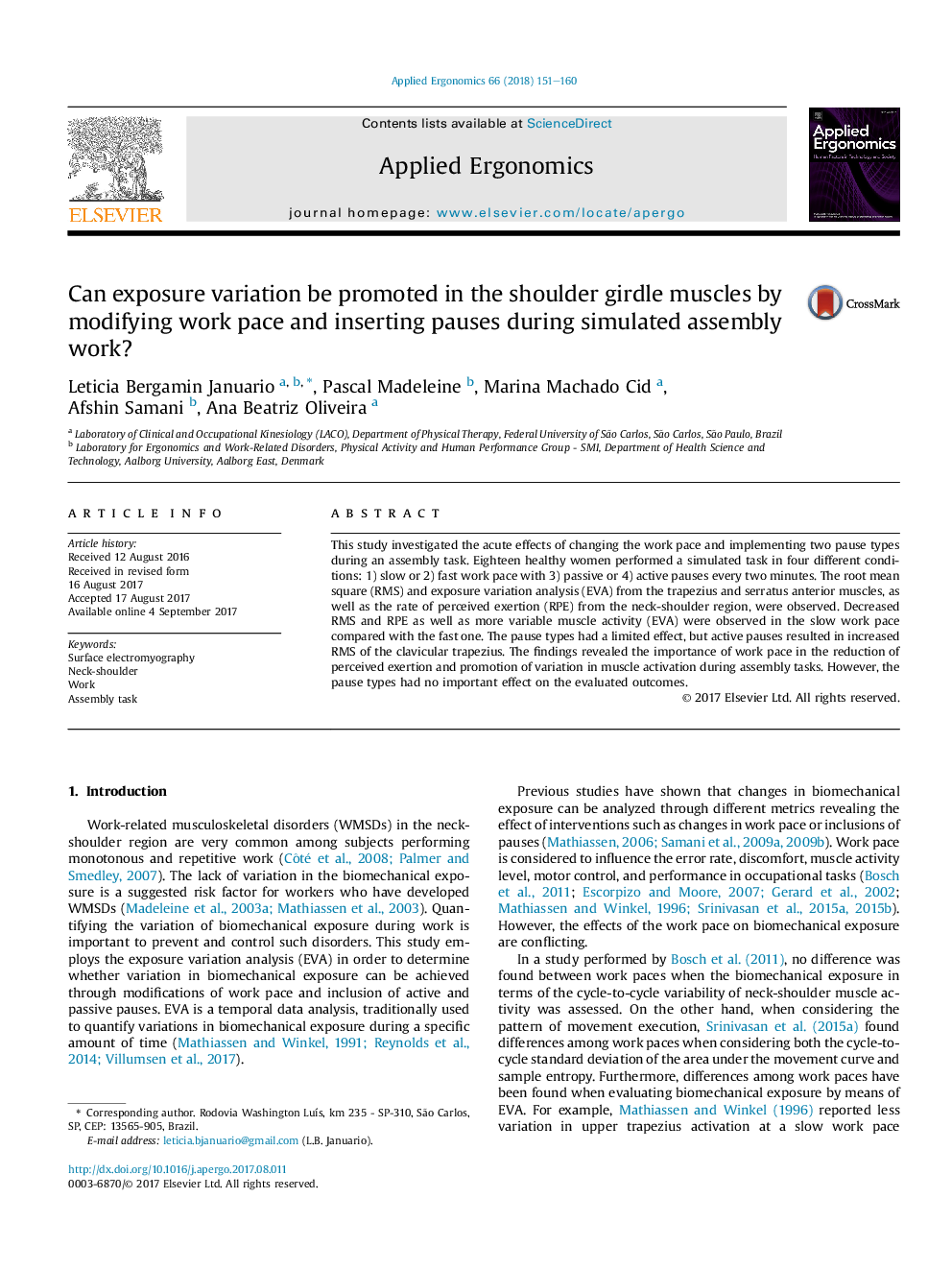| کد مقاله | کد نشریه | سال انتشار | مقاله انگلیسی | نسخه تمام متن |
|---|---|---|---|---|
| 4972005 | 1450704 | 2018 | 10 صفحه PDF | دانلود رایگان |
- An assembly task was performed at two work paces and with two pause types.
- Differences between work paces were found in terms exertion, RMS and variation level.
- No major differences were found between active and passive pauses.
- Lower perceived exertion and exposure variation could be promoted by decreasing work pace.
This study investigated the acute effects of changing the work pace and implementing two pause types during an assembly task. Eighteen healthy women performed a simulated task in four different conditions: 1) slow or 2) fast work pace with 3) passive or 4) active pauses every two minutes. The root mean square (RMS) and exposure variation analysis (EVA) from the trapezius and serratus anterior muscles, as well as the rate of perceived exertion (RPE) from the neck-shoulder region, were observed. Decreased RMS and RPE as well as more variable muscle activity (EVA) were observed in the slow work pace compared with the fast one. The pause types had a limited effect, but active pauses resulted in increased RMS of the clavicular trapezius. The findings revealed the importance of work pace in the reduction of perceived exertion and promotion of variation in muscle activation during assembly tasks. However, the pause types had no important effect on the evaluated outcomes.
Journal: Applied Ergonomics - Volume 66, January 2018, Pages 151-160
